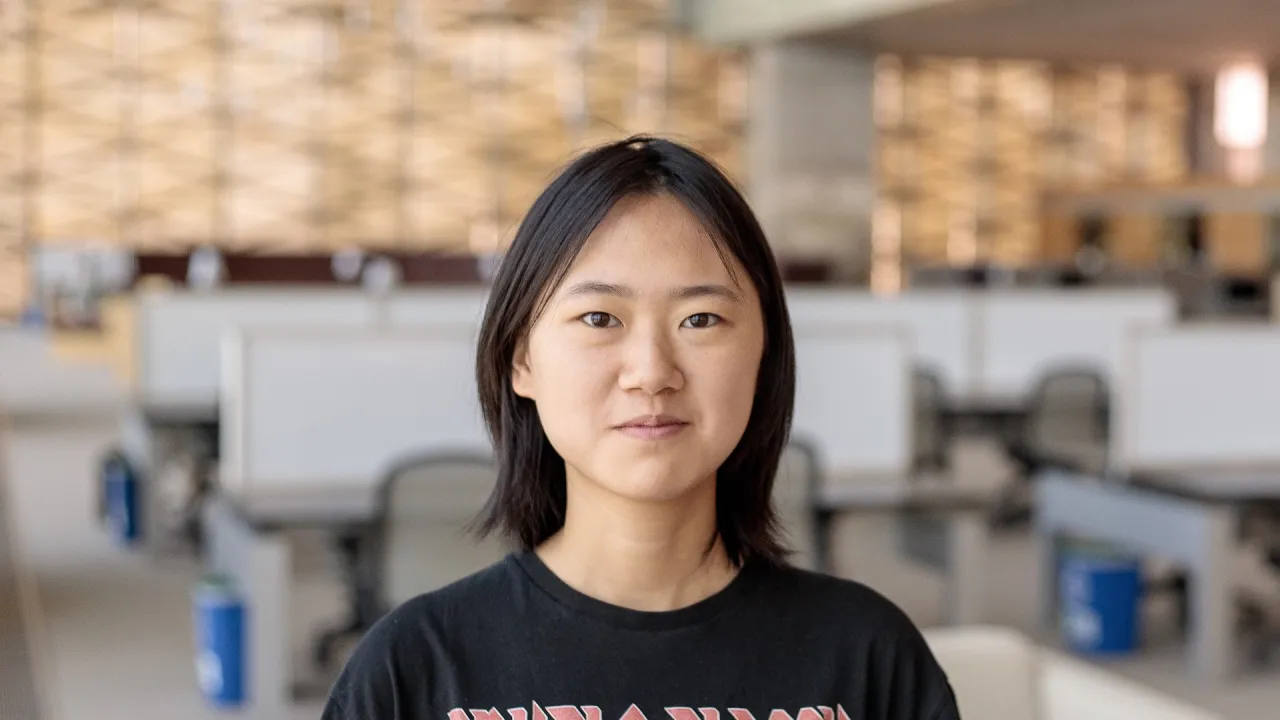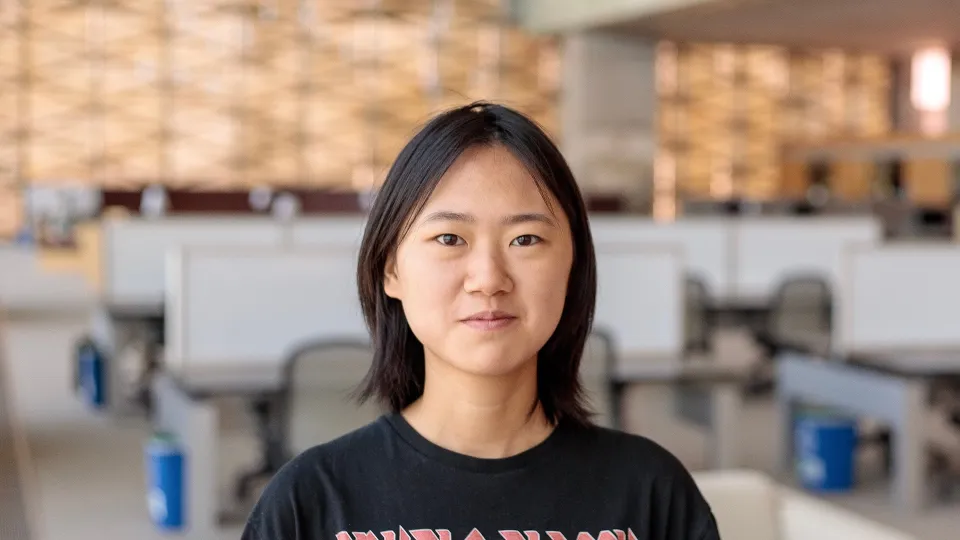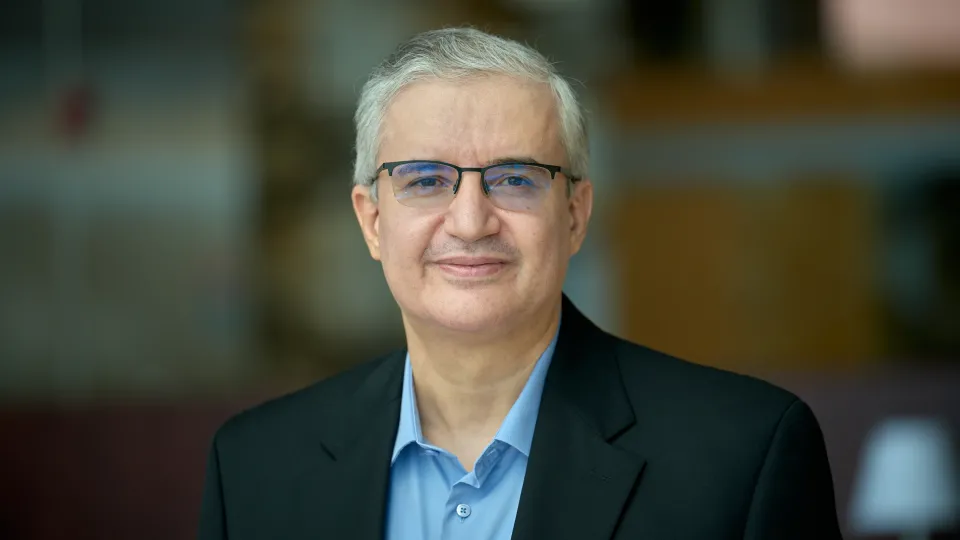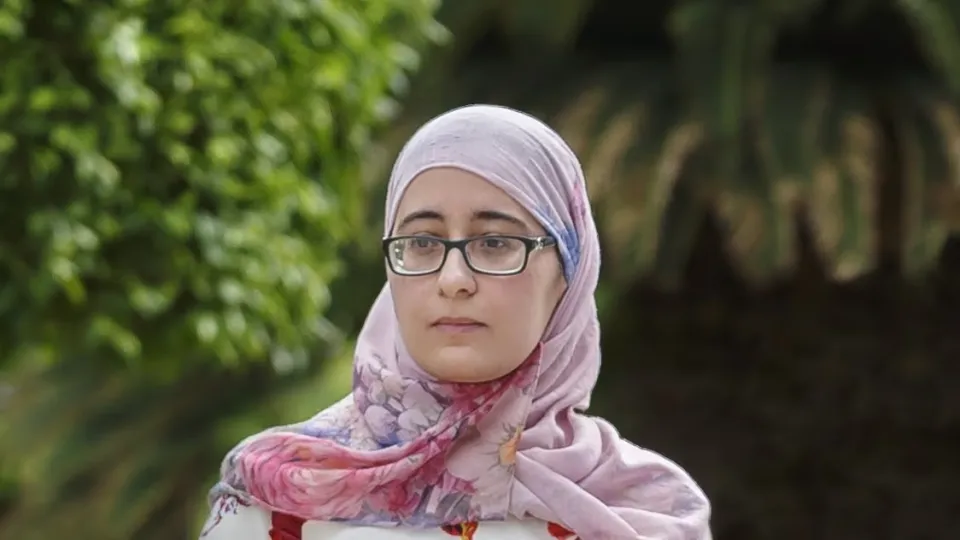
Jia Ye, a M.S./Ph.D. student in the KAUST Communication Theory Lab (CTL) receives the 2022 Andrea Goldsmith Young Scholars Award from the IEEE Communications Society in recognition of her high level of research aptitude in communication theory and engagement in the professional community.
About
By David Murphy
Jia Ye, a M.S./Ph.D. student in the KAUST Communication Theory Lab (CTL) under the supervision of Distinguished Professor of Electrical and Computer Engineering Mohamed-Slim Alouini, recently received the 2022 Andrea Goldsmith Young Scholars Award from the IEEE Communications Society in recognition of her high level of research aptitude in communication theory and engagement in the professional community.
The 2022 IEEE Communication Theory Technical Committee (CTTC) Awards Committee granted the award to Ye based on her “thorough and extensive contributions in the multiple areas within communication theory, such as reconfigurable intelligent surfaces (RIS) and non-terrestrial communications.” Additionally, she earned recognition for her high productivity, impressive publication record during her Ph.D. studies and demonstrated innovativeness through patents. Ye will receive her award during the IEEE Communication Theory Workshop 2022 in Marbella, Spain, from October 2-5, 2022.
“I am thrilled to be selected as the winner of the 2022 Andrea Goldsmith Young Scholars Award. My sincere appreciation goes to IEEE CTTC for their recognition of my work. I want to express my heartfelt gratitude to my advisor, Professor Alouini, for giving me the opportunity to join his research group and for setting me in the right research direction,” she said of her award.
“My award is also a result of the incredible guidance, supervision and mentoring that I received from Dr. Abla Kammoun, a research scientist in the CTL. This honor does not just belong to me but belongs to all the past and present members of the CTL, and it will continue to motivate me in the future, no matter what challenges I will meet,” Ye added.
Developing "thrifty" global wireless networks
Ye is part of a CTL group developing research solutions to close the "digital divide" and offer the economically and socially isolated peoples of the world the transformative benefits of wireless connectivity to access better health care and education opportunities, real-time banking, smart farming and remote jobs.
To achieve its goal of global digital inclusiveness, the CTL is pursuing a variety of research directions to develop "thrifty" wireless networks that rely on low-cost backhaul solutions, low-cost access solutions and low-cost standard smartphones, tablets and phablets that can reap the benefits of the economy of scale.
The primary focus of Ye’s current research is centered on wireless communication and the development of reconfigurable intelligent surfaces (RIS) and non-terrestrial networks (NTN). Specifically, RIS functionality in the integrated sensing and communication networks and the development of smart cities.
“In my recent work, I intend to address a very interesting and pertinent practical problem, namely that the phase shifts of the RIS are only controlled by a few bits or even just one bit. To solve the problem, I propose novel and efficient schemes that are easy to implement in practice. The security problem of NTN presents a significant challenge waiting to be solved, which motivates me to work on it,” she emphasized.
Recently, the wireless industry has focused a great deal of attention on NTN and RIS as technologies with substantial potential to improve the performance of emerging and future wireless communication systems. Regarding network access, NTN have been shown to be one of the most reliable, ubiquitous and global technologies available.
“RIS technology can turn the wireless propagation environment into an intelligent reconfigurable space that plays an active role in transferring radio signals from the transmitter to the receiver. This is achieved by reflecting incoming electromagnetic waves in desired ways and in a passive/green manner; for example, generating new radio signals without experiencing additional power consumption,” Ye explained.
“RIS offer thrifty and green wireless networks that can help to close the global connectivity divide and enhance communication quality in an economically sustainable fashion,” she concluded.


